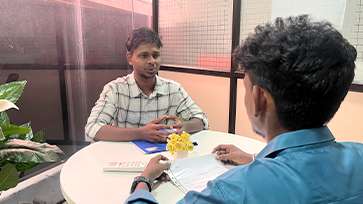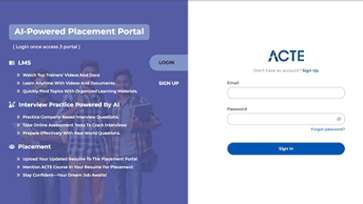Web designing Course in Bhubaneswar covers the appearance and feel of a website and its structure. During this web designing courses, you will learn how to plan and construct web sites that would appeal to the viewers. SEO and PPC are only two of the many internet marketing channels that drive visitors to your website through web design efforts. As a marketing phrase, conversions are the core goal of web design.
Additional Info
Framework of web design
It's critical to realize that frameworks are merely a concept: a pre-assembled standard kit from which to operate. The concept of a framework can be used to a variety of web-based processes:
The programmer's layer, which uses PHP to connect the database to the site content, and the designer's layer, which must present that material in HTML documents with defined CSS style sheets so that it can be read in a browser.
They can be a backend (a set of files with libraries to access databases, template structures, and session management) or a frontend (a set of files with libraries to access databases, template structures, and session management). We'll concentrate on frontend frameworks.
Frameworks for front-end development (or CSS Frameworks)
Frontend frameworks are often packaged as a set of files and folders containing standardized code (HTML, CSS, JS documents, etc.)
The following are typical components:
The developer can use CSS source code to create a grid, which allows them to position the many parts that make up the site design in a straightforward and versatile manner.
- HTML element typography style definitions.
- For issues of browser incompatibility, solutions are provided so that the site appears correctly in all browsers.
- The creation of standard CSS classes that can be used to style complex user interface components.
In terms of responsive frameworks: The creation of responsive frameworks is being fueled by the expansion of responsive web design techniques, which make it easier to create websites that adjust to multiple resolutions for different mobile and desktop devices. That is, they figured out how to make a responsive website. These frameworks are designed to provide a responsive solution right out of the box.
Frameworks are chosen.
Within CSS frameworks, we can divide them into two categories based on their complexity: simple frameworks and complete frameworks. This distinction is subjective, and it does not imply that one is superior to the others; rather, it indicates that they provide different solutions based on the level of complexity and/or flexibility necessary.
Frameworks that are easy to understand
These are sometimes referred to as "grid systems," yet they are frameworks nonetheless. They provide style sheets with column systems to make it easier to distribute various parts according to the design.
Choosing the correct framework for my website is difficult for several reasons:
1. Each location is unique and will necessitate unique qualities. Using a very thorough framework for a single-page site may produce an acceptable output, but it will undoubtedly leave many resources untapped.
2. There aren't many big differences right now: they're all quite comprehensive and simple to use.
However, there are a few things to keep in mind when selecting a framework:
- Installation time: some are simple to set up and use. Others will take longer to set up.
- Ease of comprehension: some are difficult to grasp, and others are sophisticated. Others, on the other hand, are a lot more simple.
- These will enable you to accomplish more with your website.
Connectivity to other systems.
Long-term support at its best: Some digital initiatives run out of time, and updates and support services are no longer available. It's always best to go with companies who guarantee ongoing support. Many of them are backed by businesses that provide other types of professional items.
Benefits of Web Design
- The mock-up process is sped up.
- Code that is neat Solutions to frequent CSS issues
- Compatibility with different browsers
- Good habits should be learned.
- Maintaining numerous projects becomes easier when there is a unified approach for resolving common issues.
- When working in a group, this is beneficial.
Tools
Dreamweaver
Adobe Dreamweaver is a commercial web development program available for both Mac and Windows platforms. Syntax highlighting and highly sophisticated Code Hinting, a built-in FTP client, project management and workflow settings that make collaborating a breeze, and Live View – which shows you a preview of your source code – are just a few of the features and options available in this webpage creating tool.
Dreamweaver interfaces tightly with other popular Adobe applications, like Photoshop, allowing you to share Smart Objects for quick and easy graphics component update and modification.
Nova
Nova is a new and enhanced version of Panic, a Mac OS X web development program. This site design tool aims to reduce the number of applications submitted (such as an FTP client, CSS editor, a version control system, etc.)You must create websites and optimize the workflow of your staff. Nova's one-window web development philosophy employs a tabbed interface for text editing, file transfers, SVN, CSS, and even "Books," which has searchable web books embedded in the browser.
Photoshop
Adobe Photoshop is a well-known commercial graphics editor that is available for both Mac and Windows. It is the ideal application for altering photographs and producing online graphics, and it was created for professional photographers and designers. Filters – which automatically add effects to your image or a specified portion of your image, extensibility, and automation with Brushes, Actions, and Scripting, and workflow enhancement features like Layer Comps and the Revert option – are all available in Photoshop.
Web Designer by Google
Google Web Designer is a free website design that makes it simple to create interactive and interesting HTML5-based designs. Better still, the tool assures that your designs (and motion graphics) work on any platform, from computers to cell phones. Google Web Designer also allows you to edit HTML, CSS, and JavaScript directly.
Developer for Firefox
Firefox Developer Edition is a web developer-focused version of Firefox. You have access to all of their DevTools as a developer. Analyzing and debugging, developing and designing using CSS Grid, HTML inspector, style editor, and many more tools are included in this web design tool to help you with your web development needs.
Stages of Web Design
Layout and Architecture
The presentation of each key element — text, graphics, and advertisements — is determined by code on the templates. Simpler code means faster page load times, less ongoing maintenance, and often reduced expenses (labor and bandwidth). To put it another way, a page with 15k of HTML and 30k of CSS is significantly easier to maintain than a page with 150k and 300k of HTML and CSS.
The functionality that is exhibited via the templates, such as commenting, search, RSS, and so on, is also part of the architecture.
Layout, often known as the wireframe, takes those architectural judgments and leads to decisions about where particular types of content and site elements should be placed.
Stage 2: Content, Search Engine Optimization, and Navigation
Content Choices
It's time to start laying in the real content now that a preliminary plan has been established and the team has reached an agreement. It's likely that the content can be broken down into a number of distinct topics.
Prominence is a major element in Web design and development since that determines user experience, click rates, and search engine optimization. The importance of each element should be determined by its value. For example, if shifting an article that ranks well in search engine results will result in a higher rank, it should appear more prominently on the site.
A 300X600 display ad with greater CPMs and click rates should take precedence over a 300250 display ad with lower CPMs and click rates.
Making Navigational Decisions
The number of things that can be displayed on a site with a major navigation bar at the top of the page in a horizontal dimension is limited. Most websites have a maximum of seven or eight menu options. Any more will almost always need showing them in a smaller font to make them fit, resulting in fewer visitor clicks.
When you try to display more things, you'll get three options:
- Adding a dropdown menu to the main navigation bar, which is rarely used by visitors.
- Creating a static secondary navigation bar that shows below or above the primary navigation.
- At the bottom of each page, add a more extended static navigation.
Graphics, colors, and CSS (Stage 3)
- It's beneficial and intriguing to look at a prototype without any images and just the raw material, navigation, and links.
- It forces the site's designers and management to think about content and functionality.
- I've seen far too many individuals be swayed by the appearance of a website over other considerations. Their attention is drawn to the visuals, and they ignore the information and usefulness.
- After all of the project, stakeholders have reviewed the raw site, it's time to add graphics, colors, and CSS and have them review it again.
Stage 4: Getting Started, Analyzing, and Revising
- The site has passed its internal evaluation and is now ready to go online. However, by taking this step, another assessment – the public one — is about to begin.
- A thorough analysis of analytics will reveal whether or not the design is effective. Pages per visit and time on site are two basic techniques to gauge public response (which are related).
A large number of pages per visit indicates that the public is clicking around, finding content, and experiencing a site that loads quickly enough.
- A low number of pages every visit indicates the exact opposite. In this scenario, evaluating visitor metrics to identify high-exit-rate pages is critical for resolving issues.
Phases of Web Design
The web design process is similar to other forms of communication. The phases will appear extremely similar if you've ever developed a creative brief, a public relations plan, a communication plan, or a new product. The following steps make up the phases of the web design process.
Definition of the Project
Organizations must express their stance on issues to stakeholders and make audiences aware of their products and services. A change in strategic direction or a new service is frequently the catalyst for a communication necessity, such as a Web site. The first stage in the process is to figure out why the site exists and what it is designed to accomplish. All future decisions, from site structure and naming conventions used in navigation to the visual style of the site, are guided by the aims and objectives specified at the start of the project.
Interviewing the organization's stakeholders to determine the site's strategic goals, analyze important audience demands, and identify significant competitors is the first step in the defining process. The defining step's purpose is to define three measurable important outcomes that are directly related to the organization's strategic goals.
Limiting the number of goals is a hurdle at this level. Most organizations will have more goals than they can handle, and each department will assume that its own goals are the most important. It will be easier to construct the site and the final output will be more effective if you can focus on organizational goals.
Stakeholder interviews should result in a well-formatted project brief once all of the information and assessments have been acquired. The following are the components of the brief.
Project summary: Provides a basic overview of the project, as well as information on the organization, its history, the environment in which it operates, the people it serves, and the particular value it offers to its target audience.
Goals: What is two or three precise, quantifiable objectives for the site? Clear objectives enable the Web team to concentrate on what will have the most impact and take the firm ahead.
Who will assist the organization in achieving its stated objectives? Customers, stakeholders, internal audiences, suppliers, partners, shareholders, and/or government entities are all groups to which most firms talk. Demographics, psychographics, brand perceptions, audience demands, online goals, and tasks habitually completed are all included in audience profiles.
Messages: What are the essential messages that will entice and drive key audiences to interact with the organization? What are the primary brand messages that serve to set the company apart from its competitors?
Who are your competitors in terms of providing similar services to your target audience? Include a comparison of the websites of competitors, paying attention to visual branding, messaging, navigation, calls to action, and important differentiators.
Scope of the Project
A crucial stage is defining the project's scope. You may clearly set expectations for your clients by creating a well-defined project scope plan that outlines specific tasks and deliverables, as well as exact deadlines. The use of a Gantt chart is one of the most used methods for tracking Web projects. A Gantt chart shows not only the key activities but also the tasks associated with each one, as well as the start and end dates. The Gantt chart serves as a visual aid for the team, displaying the timing for each phase as well as the interdependencies between them.
Site Architecture with Wireframes
Creating a sitemap guarantees that you've evaluated all of the site's important pages, demonstrating their interdependence and describing how the site's general navigation should be structured. Wireframes show the content that will appear on each page in great detail. The wireframes serve as a reference for determining the content hierarchy on the page, even if they don't show any actual design elements.
Design for the eye
The next phase is to design a visual style after the blueprint for the site has been specified through the creation of the sitemap and wireframes. The overall visual style will most likely be decided by the organization's visual brand, with the purpose of connecting the Web to all other modes of communication.
Designers will aim to visually represent essential brand perceptual notions inside the design, therefore the organization's brand plays a vital role in this portion of the process.
Construction of the website
After the designs have been accepted, it's time to flesh out the page designs, produce new content and refine old material, make movies, slideshows, podcasts, and other media for the site, and begin building out the HTML and CSS.
Testing of the Site
The site will be placed on a production server before it is launched, where only internal audiences and anyone you share the URL with will be able to see it. Testing the site is essential since there will inevitably be bugs that need to be fixed before it goes live. Nothing erodes a brand more than a website that isn't working properly, contains misspellings, or has broken design features. To see whether and where breakdowns occur, the site will need to be tested on several browsers (Firefox, Safari, Internet Explorer) and devices (laptops, tablets, and mobile).
Launch
The big day is here. You've put the site through its paces, had it reviewed and authorized by project stakeholders, and you're ready to go live. However, the project isn't finished after the site is live; you'll need to be ready to respond to customer input as they adjust to the new site.
Expect to see some rapid changes to the site, such as broken links being fixed, copy being edited, and adjustments being made. The Internet is a dynamic medium that evolves on a daily, if not hourly, basis; change is unavoidable.
Upkeep of the website
Websites are dynamic, breathing beings that see care and attention. All of these phases are crucial to the Web design process, including updating content, making changes to the backend, and restoring broken links.






